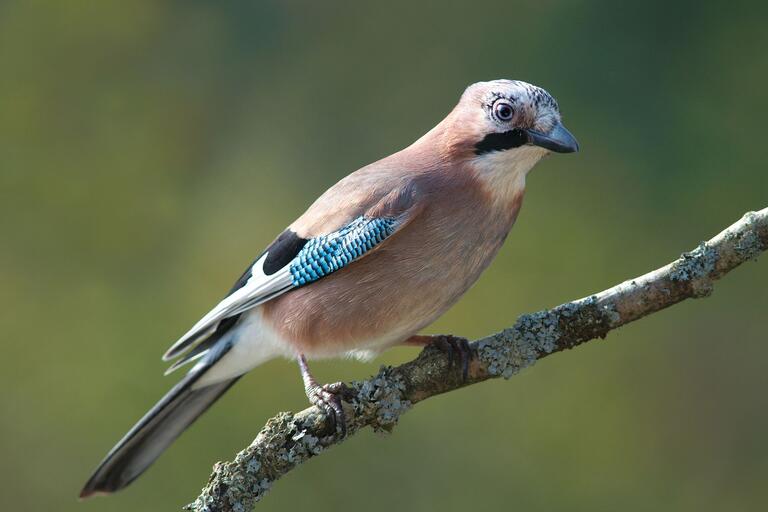
Introduction
- First, you can enter the hide and then, from the side of the outer bench, peek over the Sanctuary and the Olla de Núria
From here, you can observe forest birds in the trees around the hide. Small birds like tits and larger ones like the jay or the Eurasian magpie.
The jay (Garrulus glandarius) is a fairly common bird in Catalonia and easy to observe throughout most of the year in many forests, both in coastal holm oaks and black pine forests. It is a medium-sized bird, about 30 centimeters long and with a wingspan of about 55 centimeters. The beak is dark, short, and thick. (foto)
It mainly feeds on acorns, eggs, insects, and larvae, but it can also feed on worms, mice, and even lizards. During the autumn months, they usually accumulate acorns in hidden deposits to have reserves during the winter months.
It is nervous, distrustful, and quirky, constantly moving up and down, very noisy with a very characteristic call "scaaaaaacgg!" (Audio) They usually move in pairs or small groups, especially in spring.
FOTO: Wikipèdia
THE SANCTUARY AND THE OLLA DE NÚRIA
The sanctuary of the Virgin of Núria is located at almost 2,000 meters above sea level, surrounded by emblematic peaks such as Puigmal, Noucreus, Noufonts, and Finestrelles. The set of all these high valleys and peaks constitutes a mountain head enclosed by a long and high semicircular ridge that closes it to the east, north, and west above 2,700 meters. That's why it's known as Olla de Núria.
The rack railway inaugurated in 1931 reaches the sanctuary.
Presided over by a Neo-Romanesque church, it has a hotel next to it and 4 houses dedicated to saints Jerome, Anthony, Joseph, and Giles. Over the centuries, the sanctuary has served as a hospital, hostel, pilgrimage site, and even a prison.
Next to the sanctuary, we can visit the fountain and the chapel of Saint Giles, built-in 1615.
The image of the Virgin of Núria that is currently venerated is a carving dating from the 12th or 13th century, made of walnut wood in Romanesque style.
The legend says that Saint Giles, a penitent, arrived in Núria around the year 700 and hid the image of the Virgin there, along with other items such as a cross, a bell, and a pot. These objects were found in 1079 by a pilgrim from Dalmatia named Amadeu.
In 1931, in room number 202 of the hotel, the Statute of Autonomy of Catalonia was drafted, which was ratified at the polls on August 2, 1931, and approved by the General Courts on September 9, 1932.